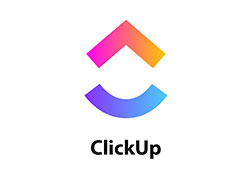Why you need to have a project management workflow

Imagine sculpting the flow of time, tasks unfurling seamlessly one after another. That’s the core of a project management workflow: a blueprint for efficiency, guiding your project from mere concept to triumphant completion.
Envision streamlining your process, where every task scheduling and milestone tracking decision propels you closer to success.
Within this framework, we maneuver through phases, juggle resources, and calibrate deadlines—a symphony orchestrated by principles rooted in Agile methodology and risk management.
I’ll take you through the intricate dance of Gantt charts and Kanban boards, the vibrant ecosystem where team collaboration thrives.
By journey’s end, you’ll have grasped not just the skeleton of an effective workflow but its pulsating heart: productivity powered by strategic finesse where each piece—a task dependency, a stakeholder engagement, or a quality assurance checkpoint—counts.
Here lies the map to chart your voyage, as we unveil the contours of project mastery in realms where time and task entwine.
What does it mean?

Project management workflow stands for tasks necessary for the successful execution of a project.
There are also dedicated workflows for the accomplishment of goals. There are even such for finishing individual tasks within a project.
With project management workflow, long and complex projects are divided into manageable steps. Processes are arranged in a logical order, and all parties can deliver on time. Teams that work on similar projects at the same time use workflows to standardize different project phases. Work becomes routine, and everyone in the team understands and adopts the workflow.
Another important benefit is that workflows map out a project’s progress and outcomes. Many workflows are presented as diagrams so that teams can visualize the different tasks and their progress.
Why is project management workflow important?
Of course, project workflow is not the only criterion for success. Some teams deliver without workflow and do so quite successfully. Nevertheless, project management workflow is highly recommended.
Project management workflow aims to improve the way work is done. It focuses on repeatable processes and tasks that can become more effective. This becomes even more important when you work on multiple similar projects. Once you define project management workflows, you can predict areas for improvement. You can even detect risks and potential shortcomings. Over time, you will be able to use resources more efficiently.
Your project workflow is important because:
- It ensures all tasks are completed in line with the company standards. There is a project workflow to follow, and all the rules are outlined.
- It provides unparalleled visibility. Management workflow makes it possible for stakeholders to follow the status of every project. They know what they’ve done so far, and what comes next.
- It reduces errors and risks. Proper project management workflow will ensure tasks are completed correctly.
- Helps achieve standardization among projects and departments. With a project management workflow in place, departments will cooperate seamlessly.
- Ensures efficient and organized processes. Effective project management workflows help the team connect their tasks. In such a way, it helps them maximize their potential.
The key advantage of project management workflows is that they provide project visibility. This can be very challenging with lasting and complex projects. With management workflow, every interested party can follow the development in real-time. Stakeholders can check the activities on a workflow diagram.
How to build an efficient project management workflow?
You can create a project management workflow using advanced project management software, or a simple pen and paper. As long as there is teamwork and information is streamlined in a centralized location, clients will be happy. Project management workflows cover everything from communication to resource planning. Don’t worry, however – it is not all that complicated!
Here are all the major steps to consider:
Step 1: List the job required
Project management always starts with a list. You need to put down every step or task, as little or insignificant as it sounds. You can then categorize tasks according to priority, and pre-select the ‘main tasks’, such as getting financing. If you’re delivering software, for instance, these would be the typical tasks on the list:
- Consult stakeholders
- Create wireframes
- Program the software
- Test the software
- Deploy the software
As you notice, these steps are quite general and can be applied to a variety of projects. You can also create more detailed and task-oriented lists specific to some of the projects.
Step 2: Define the tools and the resources you need
Now that you know what needs to be done, think of the tools and resources your team needs.
Focus on resources you don’t have yet, such as files, templates, or even employees with particular skills. Next, plan and pave the way toward those resources. If you are developing software, for example, you may need to hire a visual designer.
The more plans you make, the more gaps you will identify and solve.
Step 3: List the deliverables
As the project advances, there will also be tasks that need to be reevaluated or done differently.
You will also encounter the need to finish jobs that were not originally on the list.
When developing software, for instance, you may get a documentation task you didn’t foresee.
Therefore, it is important to perform change and quality management and to define the deliverables.
Step 4: Define the roles and delegate the tasks
Your project management workflow will not be complete if you don’t delegate tasks correctly.
This means putting the right job in the hands of the appropriate team member or department.
Be it that you are working on a reusable workflow, focus on the departments and not the individuals. This way, you make sure there is always someone to deliver repeatable jobs.
You will deal with very specific projects, but make sure all project management workflows you create are reusable.
This will require you to create specific roles for each of the tasks.
Step 5: Stay open for changes
There is no such thing as the perfect project management workflow. The first time you apply it will only be the test run.
Remember this, and keep testing and improving your project management workflows over time.
Before you make a decision, test the project management workflow in your team.
The team will identify potential risks and provide valuable insights you may not be aware of.
Step 6: Turn the project management workflow into a diagram
With a diagram, you can represent the workflow more visually. You can use symbols, shapes, and flowcharts to make it clear to the team what needs to be done.
This way, all team members understand their roles and the value of their contribution.
Diagrams also help map out the interactions among departments.
You can also use the diagram to depict the hierarchy in the team and pinpoint improvement areas that need special care.
This is how you create a workflow diagram to delegate tasks:
- You focus on a process
- You define the scope
- You design the diagram
- You add the relevant information
- You analyze
Why is a workflow diagram so useful?
Workflow diagrams can make project management very easy. There are four main benefits every business should consider:
- Optimal achievements. Workflow diagrams may be extra work, but they streamline the business processes. They are useful to any business, regardless of their size. They help you be more productive, avoid risks, and increase savings.
- Documented work: With a project management workflow diagram, you can always come back and revisit what has been done. All necessary information is there, be that for compliance, legal, or finance.
- Traceable progress. Project management workflow helps you document all information, and store and edit business documents. You can use this documentation to outline and improve any process, be that onboarding an employee or issuing a budget request.
- Streamlined communication. Another key benefit of workflow diagrams is that employees understand the process flow. As a result, communication is clear and everyone has at least a simple understanding of the responsibilities.
This comes in particularly handy for new hires or big departments. Thanks to the diagram, everyone knows what needs to be communicated, when, and to who. This reduces the risk of miscommunication, and even brings the team closer. Teams like this will be prepared for any challenge that may come their way.
- Improved security. Last but not least, diagrams make your organization more secure. Among other processes, you can track security gaps and information flows, and stay on top of things. Many teams use workflow diagrams to improve their security and safety practices.
Which is the right project management workflow software?
In all honesty, the market is overwhelmed with project management software solutions. This makes it even more important to choose a tool that works for your team.
But which project management software is that? These are the factors you should consider:
- A tool you can access across multiple platforms
- Automation features
- Collaboration features
- Personalization features
- Ease of use
- Safety
- Manageable learning curve and support
- Access limitations
Check these project management workflow software solutions:
Project management vs. Project management workflow: How can you tell the difference?
In the shortest terms, project management is much broader. It encompasses all different aspects of a project, be that the tasks or the processes.
Project management workflow, on the other hand, focuses on how things are done. It tracks the duration and success rate of processes, the quality of the team, and potential improvement.
Here are the key differences:
Length of the process: Project management workflow observes a project through the prism of separate tasks. Thus, it happens all the time, and it is very straightforward. Project management, on the other hand, has prescribed phases and focuses on the project as a whole. This makes it more layered and complex.
It is also important to mention that project management is measured by its quality. Project management workflows, on the contrary, are measured by completion.
Approach: Within a PM workflow, all processes are standardized. Project management, on the other hand, is always tailored to the scope of the project.
Triggers: Each step of the workflow is triggered by the step before it. This is not always the case with project management.
Similarities between project management and project management workflow
- Both workflow management and project management focus on projects and tasks. You can apply them for simple or more complex goals.
- Workflow management and project management can be used for large-scale and small-scale projects.
- Both workflow management and project management improve collaboration in the company.
- Both workflow management and project management are aligned on productivity efforts.
- Both workflow management and project management keep processes simple and secure.
- Processes. Both project workflow and project management help accomplish tasks through clearly prescribed steps.
- Simplification. Both workflow processes and project managers aim to simplify execution. They divide projects into manageable tasks. You can even take an extra step and create workflows for separate tasks.
- Accountability: Both areas define goals and help delegate tasks. Thanks to them, you know who’s accountable for what.
- Project visibility: In any of these approaches, you gain more visibility of the project’s status. You know when the project begins, how it develops, and when it ends. This makes it easy to complete tasks.
To make matters clearer, workflow management is the ‘what’, and project management is the ‘how’. Workflows tell you what needs to be done and in which order.
On the other hand, project management focuses on the whole, and plans how it will be done, monitored, and delivered.
For the best efficiency, however, these distinct methods must be applied simultaneously.
FAQ On Project Management Workflow
What Exactly Is a Project Management Workflow?
Alright, think of it as the DNA of your project. The workflow’s a step-by-step route from the project charter to delivery. It’s your game plan, emphasizing how team members, tasks, and phases interconnect.
How Does Workflow Differ in Agile vs. Waterfall?
Agile’s all about flexibility, adaptability. It thrives on short sprints and constant feedback. Waterfall? It’s more linear, like a Gantt chart. You’ve got rigid stages, tasks done in order, little room for sudden changeovers.
Can You Outline the Basic Steps of a Workflow?
Sure thing, first we kick things off—project kickoff, defining scope. We dive into planning, lay out our milestone tracking and resource allocation. Then, the execution dance begins. We keep an eye out, quality assurance in tow. Finally, closing with thorough project documentation.
What Tools Can I Use to Manage Project Workflows?
So many flavors! Asana keeps it tidy, Trello plays nice with visuals, Microsoft Project gets granular, and JIRA rocks the Agile world. Pick your potion; they all get you organized.
What Is the Role of a Project Manager in the Workflow?
They’re the conductors, maestros of sorts. Orchestrating team collaboration, steering risk management, ensuring every task dependency and deadline adherence is on point. A guardian of the project objectives.
How Can I Improve an Existing Project Management Workflow?
Break it down. Scrutinize each step—is process optimization needed? Tap into continuous improvement mindset. Invite feedback, tweak the task scheduling, squeeze in some agile methodology if it’s feeling stale.
How Do I Handle Changes to the Workflow Mid-Project?
Ah, the thrill of change management. Communicate, first and foremost. Assess the impact, adjust resource allocation, and update the timeline. Keep stakeholders in the loop, and sway with the changes gracefully.
How Does a Workflow Help with Risk Management?
It’s all about visibility. A workflow lays out the land, helps you spot risk assessment needs ahead of time. You see the pitfalls before you stumble—a preventive charm.
What’s the Importance of Workflow in Team Collaboration?
Heart and soul, I’d say. A clear workflow gets everyone singing from the same hymn sheet. You know who’s drumming to which beat, syncing tasks with cross-functional teams like clockwork.
How Do You Tailor a Workflow to Different Project Sizes?
Custom-fit’s the keyword! For the giants, capacity planning and stakeholder engagement. Smaller gigs might just need a Kanban board and sharp focus on task delegation. It’s about scaling your map to the size of your treasure hunt.
Conclusion
Navigating through a project management workflow, it’s clear—it’s the compass and the map rolled into one. Whether it’s about leveraging Agile methodology for nimble steps or setting the milestone tracking and task scheduling to a T. It’s that lightbulb moment when teams click, and team collaboration is no longer a catchy phrase but the way of life.
- Task delegation has become genuine power distribution.
- Quality assurance isn’t a checkpoint; it’s everyday breath.
- Stakeholder engagement transforms into a chorus, not a solo performance.
We’ve dissected the cogs and gears, from Gantt charts painting project panoramas to Kanban boards laying out visual task trails. The aim here—equip oneself with a tool belt for every turn the project road takes.
Think of it as leaving breadcrumbs in an innovative forest, these semantically relevant keywords, and LSI keywords, and yes, revelations too, charting their own unpredictable paths—each guiding you home to success. It’s a wrap, with the blueprint of mastery resting in the palm of your hands.
- How UX/UI Design Creates Winning Web Apps - May 2, 2024
- How To Learn Data Science Online - May 2, 2024
- C# in the Modern World: What is C# Used For? - May 2, 2024











